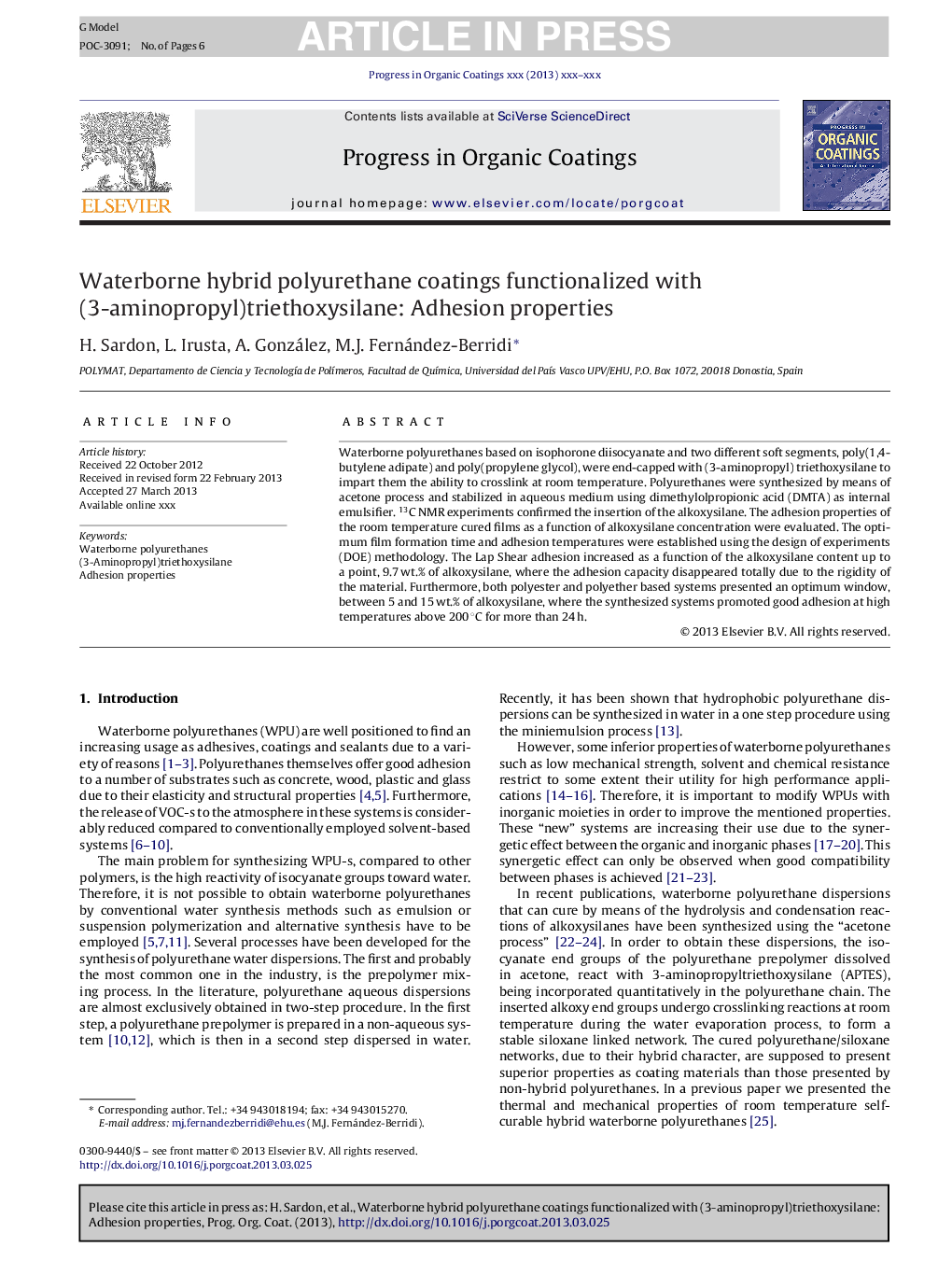| Article ID | Journal | Published Year | Pages | File Type |
|---|---|---|---|---|
| 10398013 | Progress in Organic Coatings | 2013 | 6 Pages |
Abstract
Waterborne polyurethanes based on isophorone diisocyanate and two different soft segments, poly(1,4-butylene adipate) and poly(propylene glycol), were end-capped with (3-aminopropyl) triethoxysilane to impart them the ability to crosslink at room temperature. Polyurethanes were synthesized by means of acetone process and stabilized in aqueous medium using dimethylolpropionic acid (DMTA) as internal emulsifier. 13C NMR experiments confirmed the insertion of the alkoxysilane. The adhesion properties of the room temperature cured films as a function of alkoxysilane concentration were evaluated. The optimum film formation time and adhesion temperatures were established using the design of experiments (DOE) methodology. The Lap Shear adhesion increased as a function of the alkoxysilane content up to a point, 9.7 wt.% of alkoxysilane, where the adhesion capacity disappeared totally due to the rigidity of the material. Furthermore, both polyester and polyether based systems presented an optimum window, between 5 and 15 wt.% of alkoxysilane, where the synthesized systems promoted good adhesion at high temperatures above 200 °C for more than 24 h.
Related Topics
Physical Sciences and Engineering
Chemical Engineering
Process Chemistry and Technology
Authors
H. Sardon, L. Irusta, A. González, M.J. Fernández-Berridi,
